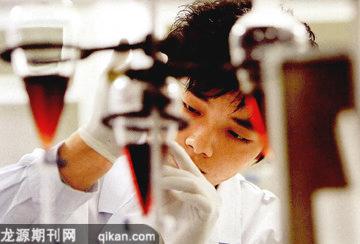Catering for the Beijing Olympics
2008-08-30BystaffreporterWANGJING
By staff reporter WANG JING

DURING the 2008 Olympics, 280,000 people from more than 200 countries and regions will need catering services. What will Beijing put on their dinner tables, and how will it handle the entire catering process? These are issues that the Beijing Organizing Committee for the XXIX Olympiad(BOCOG) cannot afford to ignore.
Whats on the Menu?
“What do you like most during your competitions?” Chen Zhiyu, head of the BOCOG games service department, once asked a table tennis world champion. “Stir-fried eggs,” was the reply. From that answer, Chen reasoned that the safest food for athletes during the Games are what they are used to.
So, familiar dishes from around the world will dominate the Beijing Olympic menu. They are catered according to the daily caloric and nutritional needs of the athletes, as well as their religious and dietary customs, in juxtaposition with the Chinese culinary culture.
The menu includes halal, vegetarian, low-sugar, Indian, Judaic and other representative cuisines, and all the dishes will have ingredient labels, level of nutrition, calories and fat. “The Olympic menu should be an expression of care for athletes from different parts of the world,” said Cai Tongyi, commissioner of the Beijing Olympic Food Safety Expert Panel and director of the Beijing Food Institute (BFI). For example, consideration is given to general food taboos. Europeans and Americans, for instance, generally do not like sea cucumbers; Muslims do not eat fish that have no scales or fins; and many foreigners do not like fish that have too many small bones.
To guarantee food safety, traditional Chinese pickled, haloid and barbecued dishes – which are usually prepared by adding some medicinal herbs – have been excluded from the Olympic menu for fear that they might affect the results of athletes doping tests. On December 27 last year, the International Olympic Committee announced that the Beijing Olympics would perform 4,500 doping tests, which is 25 percent more than at the Athens Games.

According to Mr. Cai, the names of nearly 1,000 Chinese dishes have been translated into English, and diners will know clearly what they are and how they taste by reading the English names and seeing the illustrations accompanying them. For example, gongbaojiding is “chicken in sour and spicy sauce,” and gulaorou is “pork in sweet and sour sauce.”
Promising Western Food Market
Western food has been the standard cuisine catered at previous Olympic Games. Though the International Olympic Committee has set apart 30 percent of the Beijing Olympics catering for Chinese food, Western cuisine is still dominant. So now people will wonder whether Beijing is capable of providing genuine Western foods.
Four hundred Chinese chefs have completed their study of Western cuisine in London. According to Xu Bin, secretary general of the Beijing Western Food Association, over the past two years the association has conducted Western cuisine training, inviting experienced chefs from France and the United States to teach Western food preparation, and condiment and catering management. So far, Beijing has trained more than 10,000 high-level chefs who can provide over 20 foreign cuisines, such as American, French, Italian, Japanese, Korean and Thai foods.
Currently Beijing has 3,000 Western restaurants. It is estimated that during the Games period, Beijing will receive seven to eight million international travelers, which will create a big market demand for Western food. “Beijing will see a huge Western food market and a booming Western food industry,” concluded Xu Bin.
Food Safety Control
Food safety is the paramount concern for Olympic catering. According to standard practice, all Olympic foods are labeled to identify their producers, and two-year follow-up investigations have been made of these producers to determine that their supplies are free from farm chemical residues, stimulants and other harmful elements, and are processed up to standard. The nutritious elements, protein, fat and vitamins of Olympic foods are also quantified.
Food safety control is very strict. All the food that finally gets to the dinner table is put under 24-hour monitoring, from production to transportation to cooking, and samples are taken at regular intervals. All ingredients come from designated venders, and before they get into the Olympic kitchen, they are tested for farm chemical residues, germs and other harmful elements.
On August 8 of last year, Beijing began the Olympic foods tracking system. Food administrators can log onto the website and watch through a camera the production and transportation situations of Olympic food venders, and the situation of every participant involved in all the links of Olympic catering.
“When athletes slot their card for the food they have ordered, the card reader will present related food information, such as ingredients, caterer, processor, and even the source vendor, and in this way we exercise meticulous administration of the athletes meals,” said Cai Tongyi.
This tracking system has been in operation at the first designated group of five food and beverage suppliers, 41 processing and distribution enterprises and 10 supermarkets. In addition, Beijing has set up 280 monitoring sites to keep watch of designated Olympic hotels, competition and training venues, and restaurants in scenic areas to ensure food safety during the Olympic period.
